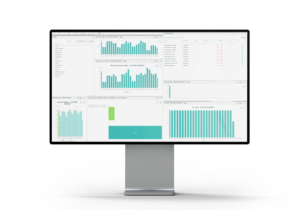Data security in IoT (Internet of Things) platforms is of crucial importance, as these systems involve the collection, transmission and storage of a significant amount of data, including sensitive and personal data. Ensuring data security in the IoT environment is essential to prevent risks such as unauthorized access, data theft and cyber attacks. Here are some key issues related to data security in IoT platforms:
Data Privacy
Data collected by IoT devices may include sensitive or personal information. It is crucial to implement encryption measures to protect data in transit and at rest. Encryption ensures that only authorized parties can access and read data.
Authentication and Authorization
IoT devices and users must be properly authenticated before they can access data and system functionality. This involves using strong passwords, two-factor authentication, and strict authorization controls.
Network Security
IoT networks need to be protected against cyber threats. This may include the use of firewalls, network segmentation and the implementation of security protocols such as Virtual Private Networks (VPN).
Security Updates
The software and firmware of IoT devices must be updated regularly to fix known vulnerabilities and maintain a high level of security. This may require an efficient update management process.
Threat Monitoring and Detection
IoT systems should have threat monitoring and detection functionalities to identify and respond to suspicious or unusual activity in real time.

Data security in endpoints
IoT devices themselves must be protected against unauthorized access. This can involve securing hardware, encrypting storage and protecting against physical attacks.
Security Lifecycle Management
IoT platforms must have a plan for managing and maintaining device security throughout their entire lifecycle, from manufacturing to end-of-life.
Compliance and Regulations
Complying with data security regulations, such as GDPR in the European Union or HIPAA in healthcare, is essential to avoid penalties and litigation. IoT platforms should comply with these regulations.
Training of users and employees
Users and staff involved in managing IoT platforms should be trained in security best practices and made aware of potential threats.
Planning for incident recovery
You should not underestimate the possibility of a security incident. IoT platforms should have incident response plans to minimize damage in the event of an attack or security breach.
How We Handle Data Security for QLEAP IoT Platform
- The QLEAP platform are regularly updated to fix known vulnerabilities.

- Two-factor authentication and different levels of access depending on the user
- Security protocols like TLS/SSL to ensure secure communication between devices and servers.
- Firewalls, network segmentation and traffic monitoring to detect suspicious activities.
- Threat monitoring and detection to identify unusual activities and quickly respond to potential cyber attacks.
- Compliance with data security regulations such as GDPR depending on the industry and region in which you operate.
- Creating detailed incident response plans to know how to act in the event of a cyber attack or security breach.
- Regular security testing and assessments to identify potential vulnerabilities and fix them before they are exploited by attackers.
Securing an IoT platform is an ongoing process, and the security approach must be integrated into every aspect of development and deployment. With ever-evolving cyber threats, constant attention to data security is essential to protect data integrity and privacy in IoT environments.

